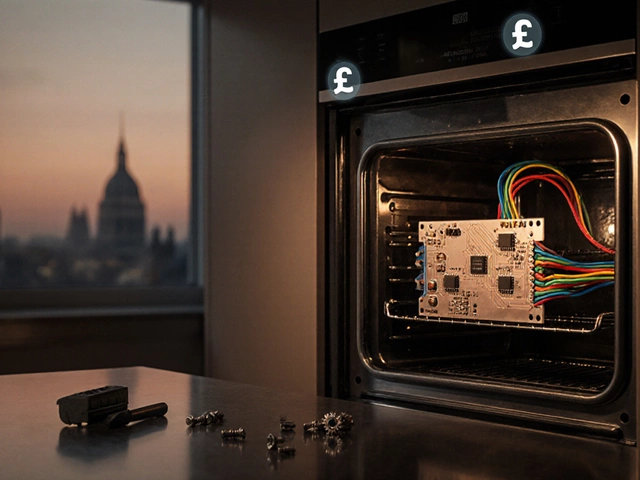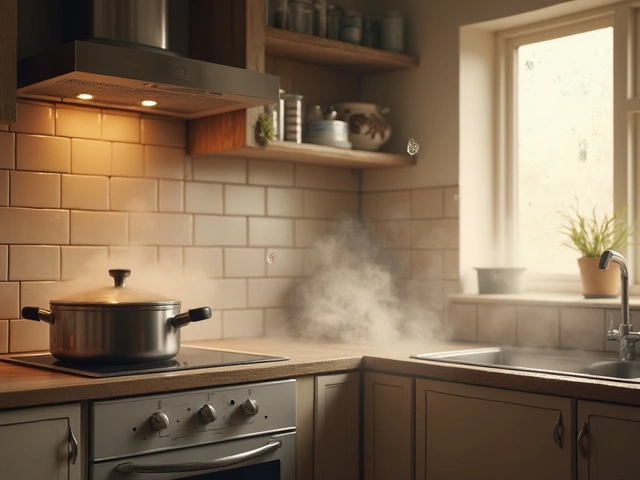If your kitchen smells like a sauna after a big meal, the extractor fan is probably not doing its job. A weak or noisy fan can ruin cooking comfort and even cause mould. The good news? Most fan problems are easy to spot and many can be solved without a pricey call‑out.
First, check the basics. Is the fan turned on? Does the switch work? Is the filter clogged with grease? A dirty filter reduces airflow dramatically, so give it a quick clean or replace it if it’s worn. Most fans have a removable mesh that you can wash with hot soapy water – let it dry completely before re‑installing.
When cleaning isn’t enough, you might need a new fan. Replacing a kitchen extractor fan yourself takes about an hour and a few tools: a screwdriver, a drill (if you need new mounting holes), and a ladder or sturdy step stool. Follow these steps:
1. Turn off the power at the circuit breaker – never rely on the wall switch alone.
2. Remove the old fan. Most units are held by a few screws and a metal bracket. Carefully disconnect the wiring – note which wires go to which terminals or snap a photo for reference.
3. Fit the new fan. Align the mounting bracket with the ceiling or cabinet opening, secure it with screws, and connect the wires using the same colour code (usually live, neutral, and earth).
4. Seal any gaps with silicone sealant to keep steam from leaking into the ceiling.
5. Switch the power back on and test the fan at low, medium, and high speeds. If it runs smoothly and pulls air efficiently, you’re done.
Our guide “How to Replace a Kitchen Extractor Fan Yourself” walks you through each step with photos and safety tips, so you won’t miss a detail.
Some issues are best left to a qualified tradesperson. If you notice any of these signs, call an expert:
Qualified electricians or specialized ventilation technicians have the tools to test motor windings, replace sealed units, and ensure everything complies with UK safety regulations. Our article “Who Repairs Extractor Fans?” explains which tradespeople have the right skills and how to choose a reputable service.
Another consideration is the fan’s lifespan. Most kitchen extractors last 8‑12 years. If your fan is older, even a perfect repair might only be a stop‑gap. The piece “Extractor Fan Replacement: How Often Should You Change Your Kitchen or Bathroom Fan?” helps you decide whether a replacement is smarter than a repair based on age, performance, and energy efficiency.
Regular maintenance makes a huge difference. Clean the filter every 1‑2 months, wipe the housing with a damp cloth, and check the vent duct for blockages. A quick once‑a‑year inspection of the ductwork can prevent ice‑build‑up in cold months and keep the fan humming quietly.
Bottom line: a well‑maintained extractor fan saves you time, money, and kitchen drama. Start with a basic cleaning, move to a DIY swap if needed, and know when to call a pro. With these tips, your kitchen will stay fresh and your cooking will stay enjoyable.

Discover how long extractor fans last, what shortens their life, and tips to maximize their lifespan in your kitchen or bathroom. Practical, clear advice from real experience.

Learn the typical UK price for an oven control board, factors that affect cost, DIY steps, and when to call a professional in 2025.

Not using an extractor fan can lead to unexpected issues in your kitchen or bathroom. From accumulating moisture and odors to potential damage over time, extractor fans play a crucial role in home maintenance. This article explores why these devices are essential, the problems that arise from neglecting them, and practical tips on proper care and repair.

When it comes to microwaves, understanding their lifespan is crucial for homeowners looking to make informed decisions about maintenance and replacement. This article delves into the essential factors that affect the longevity of microwaves, offering practical tips on extending their lifespan and recognizing when it's time for a new one. You'll learn about common signs of wear and tear, the importance of proper usage, and how regular servicing can enhance performance. Discover how to keep your microwave running efficiently and what to do when repairs are inevitable.

Learn the warning signs of a failing water heater and get practical tips for repair and maintenance to prevent costly breakdowns and keep your hot water system running safely.

Repairing an aging laptop can be a tricky decision. This article explores whether it's still worth investing in a 7-year-old device. We'll consider factors like performance, cost, potential upgrades, and environmental impact. Dive in to learn about the practical and sentimental value of maintaining your trusty laptop.